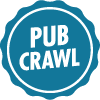Researching Your Story – A Four-Step Strategy
This post originally appeared on Let The Words Flow, but research seems to be on a lot of writers' minds lately. In the past week, I've found myself discussing research with at least three different writers! So I thought the timing might be right to revisit this topic.
Unless you’re writing a book about your own life, chances are you’ll have to do some sort of research before you can say your novel is finished. (Even if your book IS about your own life, you’ll probably have to refer to your family albums, at the very least!) Historical settings, legal proceedings, and medical conditions are just a few examples of story components that would require research. The object of this post is to suggest a strategy for research that will provide the authentic details you need without bogging you down in the process.
Step 1 – Make notes about the factual issues that you will need to research.
What will you need to learn to ensure that your story is authentic and appropriate for its genre? (I mention genre here because some genres have higher standards for accuracy than others. A “police procedural” mystery will require far more exacting details than would a contemporary fiction that includes an arrest in the plot.)
Once you’ve made a list of topics and facts you will need to research, divide it into two categories—“big picture” and “important details.”
“Big picture” knowledge is the information you need as you create the over-arching idea behind your novel and start your first draft. Examples would be:
In pre-Columbus North America, were horses a part of daily life?
Would a heart transplant be an option for a pregnant woman?
How long does DNA evidence last at a crime scene?
What qualifies an issue to be in the “big picture” category is the fact that it is at the heart of your story and essential for your concept to make sense. For instance, if your novel is about a crime that was committed aboard the Titanic, and how it is solved in the present day by the use of DNA evidence, you need to take the time to research these facts at the outset. What you learn about DNA evidence will have a huge impact on the course of your novel.
Step 2 – Attack the “big picture” issues and gain knowledge about the facts that will help form the spine of your story.
If you know that there is an area of study that is a major component to your plot, investigate that area as you form the seed of your story. If your story is set in Vietnam during the war, study up on the geography and the people. If your story is about an astronaut who makes an error that threatens to kill his entire crew, get an understanding of space missions and how they are structured and staffed.
Step 3 – Firm up your concept and dive into your first draft.
This is why you divided that list from Step 1 into two categories. The second category—“important details”—can be put aside for now. I’m not saying that you won’t have to look up those questions and answers eventually. What I am saying is that you don’t need to know every detail of life in revolutionary France before getting started writing your rough draft. Authentic details will be required before you turn in your final draft, but you shouldn’t let research prevent you from getting started. If one of your characters lights a candle to read by, and you find out later that gas lamps had replaced candles ten years before your story takes place, that detail can be fixed in the revisions stage.
Step 4 – Firm up the details and make your revisions.
This step is where you need to add accuracy. What kind of gun would a pirate have used? Did matches exist or would the main character light a wick from the fireplace? How long did it take to travel from Glasgow to London by carriage in 1814? Now that you have your first draft down, you can take the time to get the facts straight without interrupting the flow of your writing.
Do you do a lot of research for your writing? What process do you use? Do you have any ideas to add to the above? I look forward to reading your comments.






